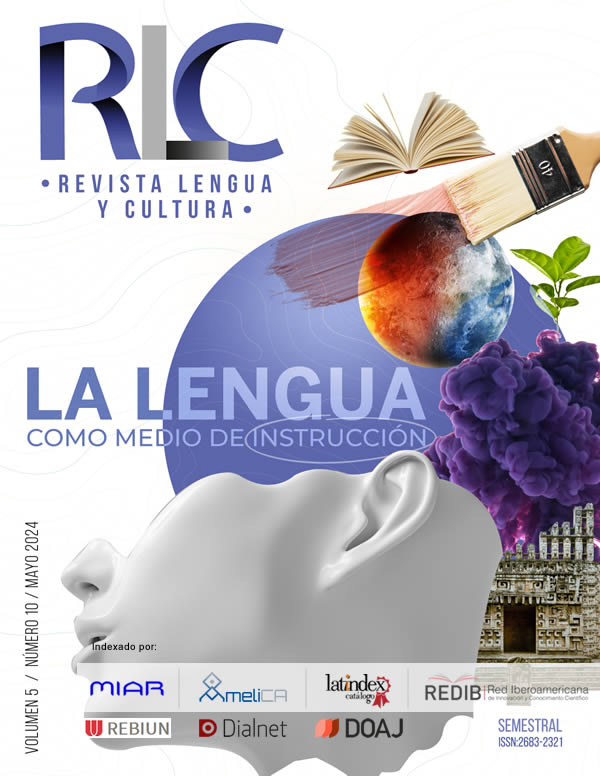Quizlet as Didactic Support in the Teaching-Learning of Transitive and Intransitive Verbs in Japanese for Mexican Students
Quizlet as Didactic Support in the Teaching-Learning of Transitive and Intransitive Verbs in Japanese for Mexican Students
Abstract
This work addresses an educational topic about the use of Quizlet as a didactic tool to teach transitive and intransitive verbs in Japanese to Mexican students. The main objective is to find more effective strategies for teaching these verbs, seeking correlations between lexical and morphosyntactic levels. The importance of linguistic and pedagogical integrality is emphasized, as no language exists only at one linguistic level.
The methodology combines qualitative and quantitative approaches, using observations in physical classrooms and online surveys with basic Japanese students. The gathered data highlights that using images with vocabulary facilitates learning, especially when combined with Quizlet as a self-learning tool before physical classes.
The data analysis shows that 85.7% of the respondents improved their learning when using images alongside verbs; and using Quizlet before classes helped in understanding the morphosyntax, meaning, and usage of the verbs. There is an emphasis on the importance of teaching verbs considering their syntactic-pragmatic relationship.
Finally, it is concluded that the effective teaching of these verbs is linked to both lexicon and syntax, emphasizing the importance of integrating grammar and vocabulary in the teaching-learning process. A pedagogical approach that combines self-learning with Quizlet and the teacher's involvement in physical classes using visual and contrasting examplesTop of Form is proposed.
Downloads
References
Banno et al. (2020). GENKI: An Integrated Course in Elementary Japanese II. 3a. ed. Tokyo: The Japan Times.
Cennamo, M. (2003). (In)transitivity and object marking: some current issues. In Romance objects. Transitivity in Romance languages (pp. 49-104). Mouton de Gruyter.
Furuoka, F. y Kato, I. (2008). The 'Honne-Tatemae' Dimension in Japan's Foreign Aid Policy Overseas Development Aid Allocations in Southeast Asia (Recuperado en https://www.researchgate.net/publication/26579216_The_%27Honne-Tatemae%27_Dimension_in_Japan%27s_Foreign_Aid_Policy_Overseas_Development_Aid_Allocations_in_Southeast_Asia).
Hopper, P. J. y Thompson, S.A. (1980). Transitivity in grammar and discourse, Language 56: 251–99.
Huddleston, R., & Pullum, G. K. (2002). The Cambridge grammar of the English language. Cambridge University Press.
Irori et al. (2000). 『初級を教える人のための日本語文法ハンドブック』(Manual de la gramática japonesa para los docents del japonés básico). Tokyo: 3A Corporation.
Kishi, D. (2019). El aprendizaje de los adjetivos del japonés en mexicanos: un acercamiento al enfoque en competencias, Pedagogía 2019: Encuentro en la Unidad de los Educadores.
Loureiro, V. J. S. (2007). ¿Por qué y para qué enseñar vocabulario?, IV simposio internacional José Carlos Lisboa de didáctica del español como lengua extranjera del Instituto Cervantes, Rio de Janeiro.
Makino, S. y Tsutsui, M. (1994). A Dictionary of Basic Japanese Grammar. Tokyo: Japan Times.
Martín, J. M. M. (2000). La lengua materna en el aprendizaje de una segunda lengua (Vol. 14). Universidad de Sevilla.
Mendívil-Giró, José-Luis (2018). Naturaleza y cultura en el lenguaje = sintaxis y léxico en las lenguas, Actas do XIII Congreso Internacional de Lingüística Xeral, Vigo, 607-614.
Mykytka et. al (2022). Quizlet como recurso interactivo en la enseñanza-aprendizaje de idiomas, en Satorre Cuerda (coord.). Memorias del Programa de Redes de investigación en docencia universitaria. Universidad de Alicante.
Porta, M. E., & Ramirez, G. (2019). Efectos de un programa de intervención en vocabulario, conciencia morfológica y fonológica en niños de jardín de infantes en lectura en grado 1. Revista de Orientación Educacional, 33 (64).
Real Academia Española. (2010). Nueva gramática de la lengua española. Espasa Libros.
Villa Sánchez, A. (2020). “Aprendizaje Basado en Competencias: desarrollo e implantación en el ámbito universitario”, REDU, 18, 1, 19-46.
Villa Sánchez, A. y Villa Leica, O. (2007). “El aprendizaje basado en competencias y el desarrollo de la dimensión social en las universidades”, Educar, 40, 15-48.
Copyright (c) 2024 Daisuke Kishi

This work is licensed under a Creative Commons Attribution-NonCommercial-NoDerivatives 4.0 International License.













